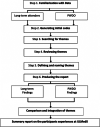Barriers to and motives for engagement in an exercise-based cardiac rehabilitation programme in Ireland: a qualitative study
- PMID: 35148675
- PMCID: PMC8832858
- DOI: 10.1186/s12875-022-01637-7
Barriers to and motives for engagement in an exercise-based cardiac rehabilitation programme in Ireland: a qualitative study
Abstract
Background: Insufficient physical activity (PA) is a leading risk factor for premature death worldwide. Ireland's public healthcare system, the Health Service Executive (HSE), has supported the development of the National Exercise Referral Framework (NERF) to tackle low levels of PA amongst those with non-communicable diseases (NCDs). 'NERF centres' are medically supervised PA programmes across Ireland that have established referral pathways with local hospitals and general practitioners. ULMedX is one such NERF centre offering exercise-based cardiac rehabilitation (EBCR) with the aim of intervention development to reduce early drop-out and maximise adherence for optimal health benefits.
Aim: The purpose of this research was to identify the major factors influencing participants' adherence and early drop-out at ULMedX. Exploring areas for future development were also prioritised.
Design & setting: Qualitative interviews were conducted with long-term attenders and people who have dropped out (PWDO) from ULMedX.
Methods: Guided by the Theory of Planned Behaviour the 1-1 semi-structured interviews were performed, transcribed, and evaluated through thematic analysis.
Results: Analysis was performed on 14 participants (50% female; mean age 67.3 years), comprising long-term attenders (n = 7; 13-month duration, 64% of classes) and PWDO (n = 7; 2.8-month duration, 22% of classes). Three major factors affecting adherence and drop-out were identified: social support, perceived outcomes from participation and practical barriers to attendance. Areas for future development included the provision of evening and advanced classes, psychological support, more exercise variety, more educational seminars and new members start as their own group.
Conclusion: The findings suggest participants at ULMedX are more likely to have had a better experience and commit to the programme if they believed involvement would benefit their physical and mental health, increase their exercise motivation by engendering a positive attitude to exercise, and that the ability to attend was within their control. Future interventions at ULMedX should have their structures centred around these motives for engagement. ULMedX should also test the participant recommendations to overcome the common barriers to adherence.
Keywords: Barriers; Motives; National exercise referral framework; Primary health care; cardiac rehabilitation.
© 2022. The Author(s).
Conflict of interest statement
We declare no conflict of interest or competing interests.
Figures
Similar articles
-
Factors influencing physical activity in adults with cystic fibrosis.BMC Pulm Med. 2021 Apr 2;21(1):113. doi: 10.1186/s12890-021-01482-x. BMC Pulm Med. 2021. PMID: 33810783 Free PMC article.
-
Adult experiences of constraint-induced movement therapy programmes: a qualitative study using the Theoretical Domains Framework and Capability, Opportunity, Motivation - Behaviour system.Brain Impair. 2023 Sep;24(2):274-289. doi: 10.1017/BrImp.2022.18. Epub 2022 Aug 24. Brain Impair. 2023. PMID: 38167185
-
Participants' experiences of the benefits, barriers and facilitators of attending a community-based exercise programme for people with chronic obstructive pulmonary disease.Health Soc Care Community. 2020 May;28(3):969-978. doi: 10.1111/hsc.12929. Epub 2019 Dec 13. Health Soc Care Community. 2020. PMID: 31833614 Free PMC article.
-
Barriers and Facilitators to Adherence to Exercise-Based Cardiac Rehabilitation Among Coronary Artery Disease Patients: A Scoping Review.J Multidiscip Healthc. 2025 May 22;18:2825-2844. doi: 10.2147/JMDH.S511196. eCollection 2025. J Multidiscip Healthc. 2025. PMID: 40433423 Free PMC article. Review.
-
Overcoming barriers to engagement and adherence to a home-based physical activity intervention for patients with heart failure: a qualitative focus group study.BMJ Open. 2020 Sep 21;10(9):e036382. doi: 10.1136/bmjopen-2019-036382. BMJ Open. 2020. PMID: 32958484 Free PMC article. Review.
Cited by
-
Reasons for dropout in the transition from hospital to municipality during exercise-based cardiac rehabilitation in a Danish cross-sectorial setting: a qualitative study.BMJ Open. 2022 Nov 29;12(11):e064660. doi: 10.1136/bmjopen-2022-064660. BMJ Open. 2022. PMID: 36446448 Free PMC article.
-
Adherence to rehabilitation and home exercise after myocardial infarction: a qualitative study of expectations, barriers and drivers.BMC Sports Sci Med Rehabil. 2023 Aug 9;15(1):98. doi: 10.1186/s13102-023-00714-3. BMC Sports Sci Med Rehabil. 2023. PMID: 37559143 Free PMC article.
-
"If you ask me … ": experienced cardiac rehabilitation patients' perspectives on maintaining regular heart-healthy physical activity.Int J Qual Stud Health Well-being. 2025 Dec;20(1):2516616. doi: 10.1080/17482631.2025.2516616. Epub 2025 Jun 10. Int J Qual Stud Health Well-being. 2025. PMID: 40492936 Free PMC article.
-
Self-Management-Centric Cardiac Rehabilitation for Acute Coronary Syndrome Patients During the COVID-19 Pandemic.Med Sci Monit. 2025 Jun 9;31:e947235. doi: 10.12659/MSM.947235. Med Sci Monit. 2025. PMID: 40489410 Free PMC article.
-
Barriers and Facilitators of Cardiac Rehabilitation in a Middle-Income Country: A Qualitative Study from China.Int J Environ Res Public Health. 2025 Apr 6;22(4):574. doi: 10.3390/ijerph22040574. Int J Environ Res Public Health. 2025. PMID: 40283799 Free PMC article.
References
-
- Guthold R, Stevens GA, Riley LM, Bull FC. Worldwide trends in insufficient physical activity from 2001 to 2016: a pooled analysis of 358 population-based surveys WITH 1·9 million participants. Lancet Glob Health. 2018;6. Available from: 10.1016/S2214-109X(18)30381-4 . - PubMed
-
- World Health Organization. Global health risks: mortality and burden of disease attributable to selected major risks. World Health Organization. 2009. Available from: https://apps.who.int/iris/bitstream/handle/10665/44203/9789241563871_eng... ().
-
- World Health Organization. Cardiovascular disease. http://www.who.int/cardiovascular_diseases/en/. 2017. Available from: https://www.who.int/news-room/fact-sheets/detail/cardiovascular-diseases... ().
-
- Central Statistics Office. Vital statistics annual report. Central Statistics Office. 2019. Available from: https://www.cso.ie/en/statistics/birthsdeathsandmarriages/vitalstatistic... ().
-
- Assets.gov.ie . Changing cardiovascular health. [online] available at. 2019.
MeSH terms
LinkOut - more resources
Full Text Sources
Medical


